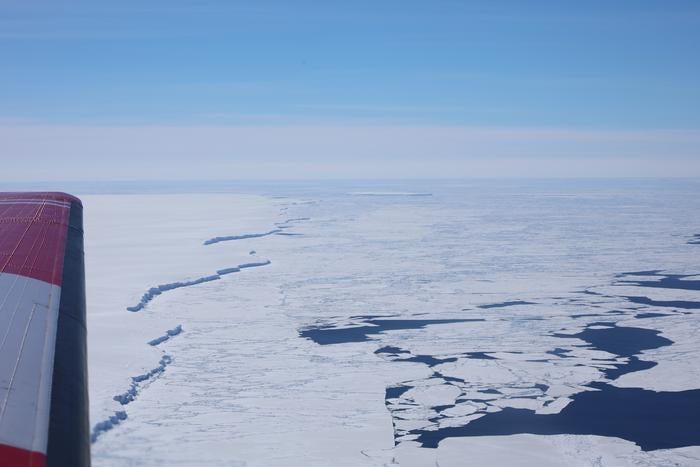Scientists discover new hidden impact of ‘melt water’ on Antarctic glaciers
‘Knowing when and how much global sea level will rise is critical to the welfare of coastal communities’
Water flowing out from underneath Antarctic glaciers could be causing them to lose ice at a faster rate than previously estimated, a new study has found.
The impact of so-called “meltwater” on how fast Antarctic glaciers melt is not yet taken into account.
The study, from The Scripps Institution of Oceanography, suggests that glacier melting could increase sea-level rise by 15 per cent by 2300.
“Knowing when and how much global sea level will rise is critical to the welfare of coastal communities,” said Tyler Pelle, the study’s lead author and a postdoctoral researcher at Scripps.
“Millions of people live in low-lying coastal zones and we can’t adequately prepare our communities without accurate sea-level rise projections.”
The study, published in the journal Science Advances, focused on two glaciers in East Antarctica, named Denman and Scott. Together, these glaciers hold enough ice to cause nearly five feet (1.5metres) of sea-level rise.
By including the influence of “subglacial discharge” - flow of meltwater into the sea from beneath the glaciers - the researchers found that sea-level rise increased significantly.

The subglacial discharge caused a 15.7 per cent jump in sea-level rise from 0.74 inches (19mm) to 0.86 inches (22mm) by 2300, the researchers found.
The scientists are planning to study other Antarctic glaciers, including prominent ones like Thwaites Glacier in West Antarctica.
“I think this paper is a wake up call for the modeling community. It shows you can’t accurately model these systems without taking this process into account,” said Jamin Greenbaum, co-author of the study and a researcher at Scripps’ Institute of Geophysics and Planetary Physics.
A major takeaway is what humanity does in the coming decades to rein in greenhouse gas emissions, said Mr Greenbaum.
“If there is a doomsday story here it isn’t subglacial discharge,” he adds. “The real doomsday story is still emissions and humanity is still the one with its finger on the button.”
Join our commenting forum
Join thought-provoking conversations, follow other Independent readers and see their replies
Comments
Bookmark popover
Removed from bookmarks